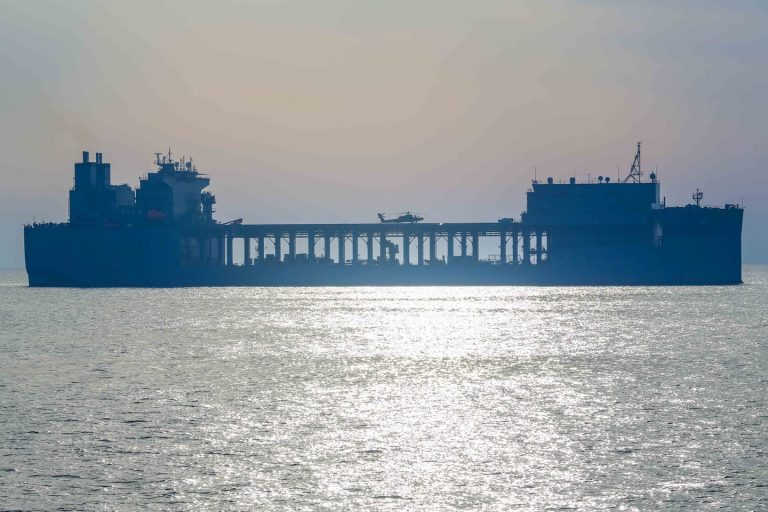US Central Command said the two elite soldiers were not located during the 10-day search and rescue operation.
The command said in a statement: “Their status has been changed to deceased.” “We are now performing resuscitation operations.”
The special forces disappeared during a dangerous night operation on January 11 in the Arabian Sea near the coast of Somalia, an area known for piracy and weapons smuggling. Troops were dispatched from the floating base, USS Lewis B. Puller, to search a vessel suspected of carrying illegal weapons. Officials said that while trying to board the ship, one of the special forces members slipped from the ladder, while the second rushed to help, after witnessing his companion falling into the water. Both were swept away by strong swells.
A search and rescue mission was launched while other personnel boarded the suspected vessel. Military officials said they discovered ballistic missile warheads, cruise missiles, propulsion and guidance systems and air defense components, and described the equipment as Iranian resupply to Houthi militants in Yemen.
The Houthis, who control large swaths of the country devastated by years of civil war, have launched more than 30 attacks on commercial ships since November, dramatically disrupting commercial shipping in the Red Sea. The group has framed its campaign as retaliation for the Israeli war in Gaza.
In response, the United States and its partners rushed to send warships to the region, leading to several altercations and intensified efforts to intercept arms shipments from Iran. However, President Biden and his national security team have sought to tread carefully, fearing that an overreaction or miscalculation could further embolden the Houthis and other Iranian proxy groups that have intensified their attacks on US forces and interests across the Middle East.
As the tragedy unfolded in the Arabian Sea, US forces launched what became regular air strikes in Yemen – seven rounds so far, joined initially by Britain – to destroy the Houthis’ extensive arsenal of Iranian-made weapons. US military officials have established a direct link between weapons seizures at sea and attacks emanating from Yemen.
After the missile components were discovered, the boat's 14-person crew were detained, and their vessel – described as a dhow, a type of commercial vessel sometimes used by smugglers – was sunk. Officials said the US boarding team deemed it “unsafe.”
It remains unclear how the seals were lost so quickly. The mission was carried out with drones and helicopters that were already in the air to provide surveillance, and the sailors were wearing flotation devices, according to a defense official familiar with the operation. The sailboat crew, who was still being questioned on Friday, showed no hostility, said the official, who spoke on condition of anonymity to describe the incident.
It is unclear whether the sailors were wearing other equipment that would aid in the rescue, such as infrared lights or flashing lights, which US forces often wear on missions so friendly forces can easily identify them.
Intercepting suspicious or hostile ships, known as a Visitation, Boarding, Search and Seizure, or VBSS mission It is considered one of the most difficult and dangerous operations carried out by highly trained forces. These operations usually involve approaching the suspected vessel in small boats and using ladders and climbing equipment to board, which may be complicated by heavy seas.
Missy Ryan contributed to this report.

